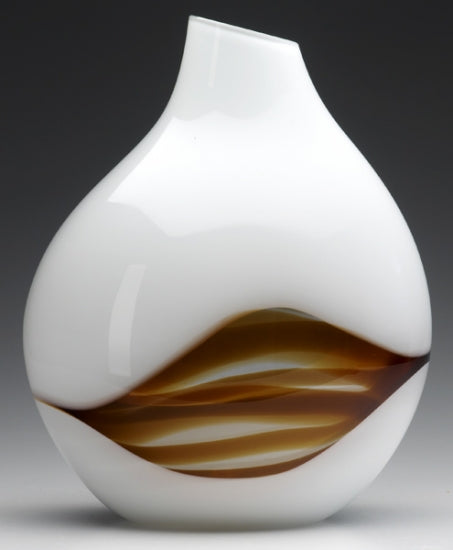This is a coloured opaque glass whose preparation is based on the same principle as the lattimo glass: in this case, however, white microscrystals are dispersed in a coloured vitreous phase.
Others, differently, are obtained with coloured microcrystals dispersed in either a colourless or a coloured vitreous phase. In the first case lattimo is used (microcrystals of calcium and sodium fluoride) or white enamel (a more intensive white, completely opaque even in a thin layer), generally obtained with microcrystals of arsenic and lead) dispersed in a transparent coloured glass. The white microcrystals, in addition to making the glass opaque, soften the colour of the glass in which they are inserted that must contain a high percentage of colouring agents. In this second case 'cores' are used: these are the semifinished crystalline structure based on lead antimonate or stannate that are yellow or red. These are added to the molten mass just before processing because they are compounds that dissolve easily.
The utilization of vitreous paste in the past century has been the prerogative of just a few glass factories, such as Venini & Co . and MVM Cappellin & Co., since results could be very difficult to attain and they often gave rise to unsatisfactory materials. Their utilisation was more widespread after the war, adopted as they were to complement the making of figures, much in fashion at the time. Only the American designer Thomas Stearns made large items entirely of vitreous paste for Venini & Co.


コメントを書く
全てのコメントは、掲載前にモデレートされます
このサイトはhCaptchaによって保護されており、hCaptchaプライバシーポリシーおよび利用規約が適用されます。